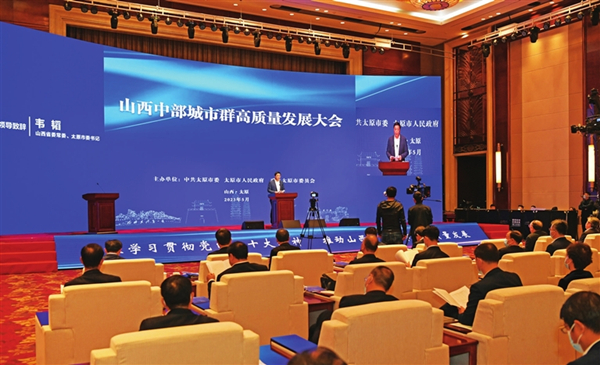
A conference on the high-quality development of the central Shanxi city group is held in Taiyuan, capital of Shanxi province, on May 9. [Photo/Taiyuan Evening News]
A conference on the high-quality development of the central Shanxi city group was held in Taiyuan, capital of Shanxi province, on May 9.
The central Shanxi city group consists of the five cities of Taiyuan, Xinzhou, Lyuliang, Jinzhong, and Yangquan and offers significant advantages in terms of location and transportation. It also boasts strong economic strength, rich scientific and technological innovation resources, a relatively complete urban system, and extensive human resources. It is considered one of the regions with the greatest development vitality in the province.
As one of the 19 city groups specified in the national 14th Five-Year Plan (2021-25), it's an important part of the national new-type urbanization strategy aimed at promoting the high-quality development of Central China in the new era.
Accelerating the high-quality development of the central Shanxi city group will also help to coordinate the comparative advantages of the five cities, which is crucial if Shanxi hopes to rise to first place among all the provinces in Central China.
Wei Tao, Party secretary of Taiyuan, said the city will give full play to its leading role in the group's integrated development.
The provincial capital will cooperate with Jinzhong on building an urban core in Yuci and Taigu districts, coordinate with Xinzhou on integrating into the development of the Beijing-Tianjin-Hebei region while also serving Xiongan New Area, and build an important hub for the Shijiazhuang-Taiyuan Economic Corridor together with Yangquan. It will also jointly develop an ecological safety barrier and a comprehensive energy base with Lyuliang.
Taiyuan will strive to align the respective plans of the five cities, promote the coordinated development of their industrial layout and interconnected infrastructure, help improve their ecological environment and joint governance, and enhance their sharing of public services.
